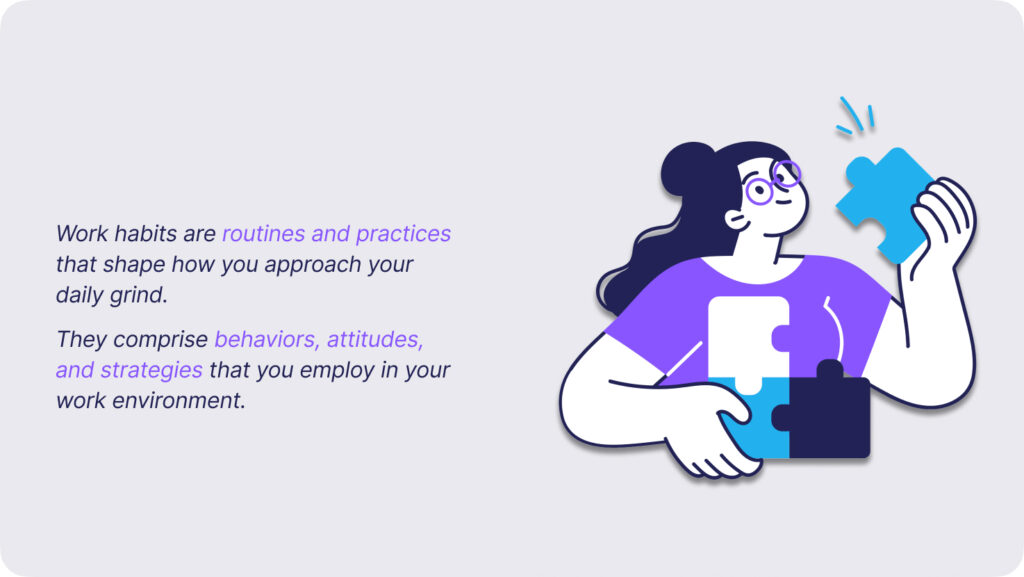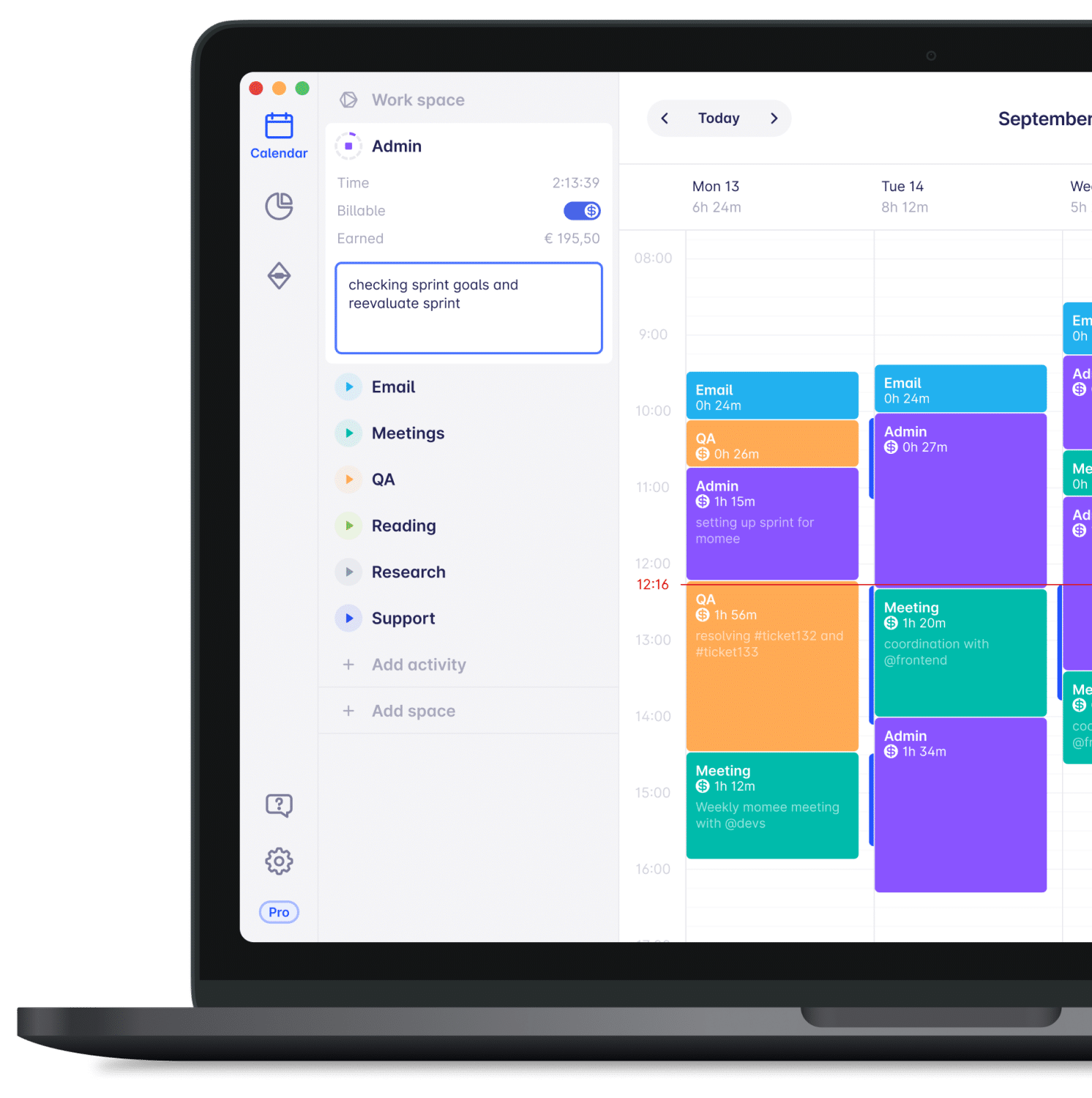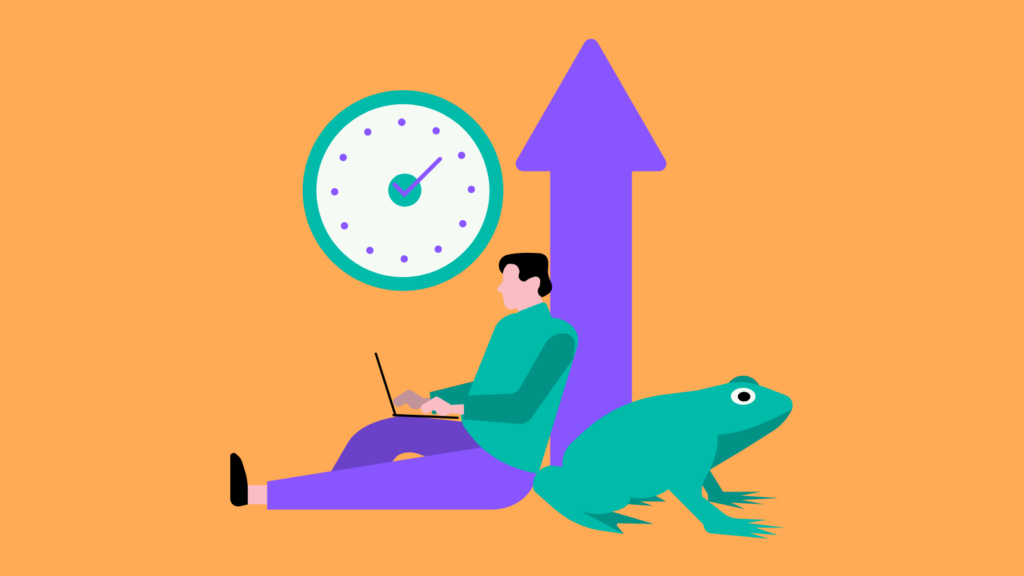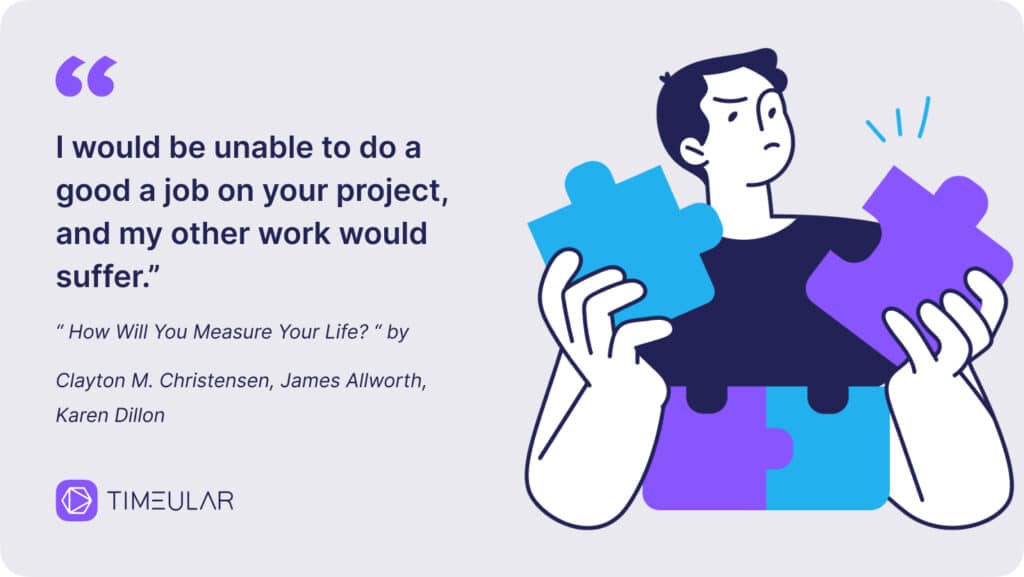Top Work Habits To Hack Your Day
Struggling to find your groove at work? Forget the clichéd advice you’ve heard a thousand times, like showing up on time or having an agenda for meetings.
You’ll dive into the cutting-edge of work habits, the kind that not only boosts your productivity but transforms your entire approach to your professional life.
Key takeaways:
- You’ll learn about unconventional work habits like interrupt coalescing, Tim Ferris’s “Eat the frog” method, knockout lists that replace to-do lists, and Yoga Nidra mediation.
- Employees who receive feedback daily rather than annually are 3.6 times more likely to perform outstanding work (Gallup). So, are you open to feedback?

What are work habits?
Work habits are routines and practices that shape how you approach your daily grind. They comprise behaviors, attitudes, and strategies that you employ in your work environment. Examples include how you structure your time, tackle your tasks, interact with your colleagues, and even manage your energy and motivation.
So, all these choices and habits contribute to your overall productivity, effectiveness, and job satisfaction, or the opposite. The bad habits of which we’re all guilty at times are procrastination and context-switching, or multitasking, but let’s focus on good workplace habits moving forward.
11 effective work habits examples

1. Managing time in a smart way
According to Zippia, 82% of employees don’t have a proper time management system and just deal with “whatever seems most important at the time.” This leads to employees feeling that there is no control over their workday and other perplexing stats.
When it comes to smart time management, gone are the days of simple, basic to-do lists. Enter the automation and intelligent time management era powered by technology and data-driven insights. And while time seems intangible, you can take control of your time with the right habits and tools in place. Let’s explore some good workplace habits related to time management:
- Use time management apps like Timeular. WithTimeular, you’re able to:
🎯 Track your time automatically to identify exactly where your hours are going;
🎯 Identify patterns and trends in your productivity so you can optimize your schedule;
🎯 Set time goals and reminders to keep you focused and on track;
🎯 Analyze your progress and make data-driven decisions about how to improve your time-spending habits.
Here’s a report in Timeular that surfaces all the above:

Besides time and habit management apps, other good habits related to time management are:
- Implement time-boxing with dynamic prioritization: Allocate specific time blocks to tasks, but use AI-powered tools to automatically adjust your schedule based on real-time priority changes and unexpected events.
- Practice “attention residue” minimization: Use transition rituals between tasks to clear your mental cache, which helps you reduce the cognitive load from task-switching.
- Adopt “micro-productivity” moments: Identify and utilize small pockets of time throughout your day for quick, high-impact tasks or learning opportunities.

Using an automated time management app surfaces your time-spending habits and helps you organize your time better
2. Create your perfect work mode routine
Crafting a simple, personalized routine that helps you shift gears from “I’m just waking up, and everything is a blur” to “I’m ready to tackle the day” can make a world of difference in your daily grind.
Give your brain and body signals that it’s time to focus. This routine is just like a mental and physical warm-up for your workday.
This routine might look different for everyone, but here are a few ideas that work for me:
- Brew a delicious cup of coffee(or tea). There’s something about the aroma and ritual of making your favorite morning beverage that can help you feel more awake, alert, and ready to take on the day.
- Create a “work mode” playlist. Music is often a powerful tool for setting the tone and energy of our workday. Choose songs that help you feel focused, motivated, and in the zone—whether that’s classical music, lo-fi beats, or your favorite pump-up jams.
- Set your intentions for the day. Review your to-do list, prioritize your tasks, and set goals for what you want to accomplish. A clear action or time management plan can help you feel more focused and motivated.

3. Eat the frog in the morning
You might have heard of the Eat the Frog method, which implies simply starting your day with the hardest task. This prevents you from dragging it with you for the entire workday.
Thanks to this strategy, you’re escaping the time anxiety that comes with procrastination, and you’re starting your day on the right foot. It helps you feel confident as you’ve tackled difficult tasks first thing in the morning, and you can conquer all other challenges that appear on your to do list.
A great example of a productivity guru applying this simple strategy is the bestselling author Tim Ferriss. In his book “The 4-Hour Workweek“, Ferriss recommends identifying your most important task (or “MIT”) each day and completing it before moving on to less critical tasks. The author says that this helps him set a better emotional tone for the entire day. Even when doing a small task, finalizing it makes Ferris say to himself, “Hey pal, don’t worry, you produced something today.”
So, don’t worry, and start producing something today, too. As early in the day as possible, though!
4. Mindfully group your interruptions
According to the latest time management statistics available, employees can save up to 40 hours per month by managing interruptions. This prevents them from having certain timeframes to focus only on deep work, which would help solve essential and cognitively demanding tasks.
The solution? Apply “interrupt coalescing,” which, simply said, groups interruptions based on priorities. Let me introduce you to the practical example of our CTO, and then I’ll define the concept for you:
“As a CTO and head of product, managing a broad spectrum of tasks is crucial. To maintain productivity, I structure my day with a consistent routine: I dedicate mornings to deep, focused work on high-priority projects and reserve afternoons for communication and addressing urgent matters as they arise.” Manuel Zoderer.
In other words, our CTO applies the same system on which each of our devices functions: once a computer is given a command, it assesses the priority and groups it in priority batches based on its resources. If the priority seems urgent and the computer has the resources to handle it, it will. Otherwise, it adds priority to a queue, which, in our CTO example, he reserves the afternoons for communication.
5. Say no to work more often
Though counterintuitive at first glance, as no job description would include it as a desired habit, saying no at work is a beneficial and healthy work habit. It helps you maintain a high quality of work and demonstrate good leadership and time management skills. You also position yourself as reliable as you demonstrate that you evaluate your workload realistically.
Most of us have a hard time saying no in any context, let alone at work, where we associate a successful career with being always available or taking on as many projects as possible to grow new skills.
If you’re hesitating about saying no, remember that saying no allows you to focus on your most important tasks, deliver high-quality work, and not spread yourself too thin. You also create space for opportunities that will help you grow and evolve in your career. Another benefit is that you’re keeping healthy boundaries around your time, energy, and expertise. That keeps your work-life balance in check, preventing burnout and resentment.
If it seems easier said than done, here’s a potential way of reasoning your no:

Note: I’ve struggled to say no to work myself, so I researched and applied a winning framework for saying no. You can find it in this comprehensive guide: How to say no at work [Framework and 6 Examples]
6. Be open to feedback and take it well
Meaningful feedback fuels performance; it doesn’t hinder it. A Gallup report found that employees are 3.6 times more likely to perform outstanding work if they receive feedback from their managers daily rather than annually.
However, feedback can be intimidating. It can scare you off and make you feel worthless or threatened.
Of course, the message sender is responsible for communicating constructive feedback and using good communication skills. However, once this part of the communication transaction is completed, the responsibility lies in your hands. You’re responsible for managing your emotions and understand that the feedback has nothing to do with you personally, but it’s only an instrument that helps in refining your work. It would be great to keep the following in mind:
- Take time to process. It’s okay to take a step back and reflect on the feedback before responding or acting on it. Give yourself space to digest and consider what you’ve heard/read.
- Don’t be defensive. It’s just constructive criticism helping you work on your knowledge gaps.
- Ask clarifying questions. If something is unclear or you need more context, don’t be afraid to ask for more information or examples.
- Follow up and follow through. If you receive feedback that requires action or change, make a plan and communicate your intentions. Show that you’re taking the feedback seriously and are committed to growth.
7. Make knockout lists
What’s a knockout list, you ask? It’s a stripped-down, no-nonsense to-do list that focuses solely on your top priorities and must-do tasks. Think of it as your personal hit list of things you absolutely need to knock out before the day is done. The key to making a knockout list work is to keep it short and non-negotiable.
The idea is for you to focus on 3-5 items max, and each one should be a specific, actionable task that you can realistically complete in a day. By prioritizing your most important, high-impact tasks and knocking them out consistently, you’ll make meaningful progress on the projects that truly matter.
So, to give it a try, you need to follow this process:
- Take 5 minutes at the start of each day to jot down your 3-5 must-do knock-out tasks.
- Keep that list front and center throughout the day, and make it your mission to cross off every item before you quit.
- If you want to take this to the next level, apply Marcus Lemonis’s (serial entrepreneur) celebration method: Make paper airplanes out of each task card, and when finalizing them, fly them away. This way, you’ll give yourself a physical signal that your task is checked off.

Using an automated time management app surfaces your time-spending habits and helps you organize your time better
8. Communicate effectively
Communication can often make or break your success at work. It’s one of the healthy work habits that requires consistent effort and practice. Whether you’re collaborating with colleagues, pitching to clients, or leading a team, the way you share information, ideas, and feedback can profoundly impact your productivity, relationships, and overall impact.
Developing good work habits takes consistent practice, and communication requires thorough practice:
- Start by practicing active listening: When communicating face-to-face with others, make a habit of giving them your full attention and focus. Put away distractions, make eye contact, and listen to understand, not just to respond.
- Be clear and concise: Whether you’re writing an email, giving a presentation, or having a one-on-one conversation, aim to be as clear and concise as possible. Use simple language, avoid jargon or acronyms, and get to the point quickly.
- Adapt your communication style to your audience: Different people and situations require different communication styles. Make a habit of observing your audience and adapting your approach accordingly – whether that means being more formal or casual, more detailed or high-level, more assertive or collaborative.
As communication is a two-way street, regularly seek feedback from others on your communication skills and style. Don’t forget to be open to constructive feedback, too.

9. Organize your space (physical and digital)
When your workspace is cluttered and chaotic, it’s not just an eyesore. It’s a productivity killer. A messy desk, an overflowing inbox, a sea of random files on your desktop… all of these things can slow you down, distract you, and make it harder to find what you need when you need it.
Conversely, when your space is organized and streamlined, it’s easier to achieve job performance. Everything you need is at your fingertips, and you can focus on the task at hand without getting bogged down in the clutter.
To work on this work habit, try this process:
- Start with a purge: Take a good, hard look at your physical and digital space, and get rid of anything that’s no longer serving you. Toss those old papers, delete those ancient files, and unsubscribe from those irrelevant newsletters.
- Create a system that works for you: There’s no one-size-fits-all approach to organization – what works for your colleague might not work for you. The key is to find a system that aligns with your natural tendencies and workflow. Maybe that means color-coding your files, using a specific set of folders for your projects, or investing in a snazzy label maker.
- Make it a daily habit: Like any good habit, organization requires consistency and repetition. Make it a part of your daily routine to tidy up your space, file away loose papers, and keep your digital space in order. The more you do it, the more automatic it becomes.
10. Mind your energy (and manage it)
We’ve all been there: you’ve got your schedule planned out to the minute, but when it comes time to tackle that big project or complex task, your brain isn’t cooperating. That’s because productivity isn’t just about how many hours you put in. It’s about how much focused, high-quality energy you bring to the table.
That’s why including positive work habits like energy management can profoundly impact your work. Try to focus on the following:
- Start by paying attention to your natural rhythms and patterns. Are you a morning person or a night owl? When do you feel most creative, focused, or energized? Use that self-awareness to plan your most demanding tasks for your peak times and save the more routine or administrative work for when your energy is lower.
- Build in regular breaks and time for renewal throughout your day. That might mean taking a quick walk outside, stretching at your desk, or even just closing your eyes and taking a few deep breaths. The idea is to give your brain and body the rest and recharge time they need to keep functioning at their best.
Tip: When I struggled with low energy and used to lose focus often, I did a ten-minute Yoga Nidra meditation. It’s not woo-woo, I promise, and it’s not Yoga, though its name might be misleading. It’s a 10-minute mediation backed by science. It truly restores your energy, and clinical studies have shown that it is associated with positive physiological changes.
11. Take the lead in your learning process
When was the last time you felt truly energized and inspired at work? Chances are, it was when you were learning something new, tackling a project that stretched your abilities, or collaborating with people who brought fresh perspectives and ideas. That’s why it’s so important to make continuous learning and growth a non-negotiable part of your professional identity.
Let’s explore some ways to ingrain this work habit:
- Set learning goals for yourself: Just like you set goals for your work projects or fitness routine, set specific, measurable work goals for your professional development. Maybe you want to master a new software program, earn a certification in your field, or develop your public speaking skills. Whatever it is, make it a priority and hold yourself accountable.
🎯 Not sure how to set goals for different time spans? Check our blueprint for short-term and long-term goals.
- Seek out new challenges: Don’t wait for your boss or your company to hand you new projects or responsibilities. Be proactive and seek them out yourself. Volunteer for that stretch assignment, pitch that innovative idea, or take on a leadership role in a professional organization. The more you put yourself out there, the more you’ll grow and have control over your professional reputation and growth.
Conclusion
Adopting these productive work habits isn’t just about ticking more boxes on your knockout list. It’s about fundamentally changing how you approach your day-to-day working habits.
From embracing productivity tools like Timeular to mastering the art of saying “no,” each habit is a stepping stone to a more productive, balanced, and fulfilling career. Remember, the goal isn’t to work harder but to work smarter.
FAQ
How do you demonstrate good work habits?
You demonstrate good work habits by effectively managing your time and prioritizing tasks wisely, such as tackling hard work early in the day. Maintain an organized workspace, be open to feedback, and consistently seek opportunities for learning and improvement, too.
Why are habits important in the workplace?
Work habits are crucial because they shape your daily behaviors and significantly impact your productivity, efficiency, and overall job performance. Good work habits, such as effective time management, strategic task prioritization, and continuous learning, boost individual output, contribute to a more positive work environment, and foster long-term career growth and satisfaction.
How have I improved my work habits?
You’ll know you have improved your work habits when you apply smart time management strategies and have control over your time. You’ll also feel productive and good about your job performance, and you’ll have enhanced focus and efficiency.